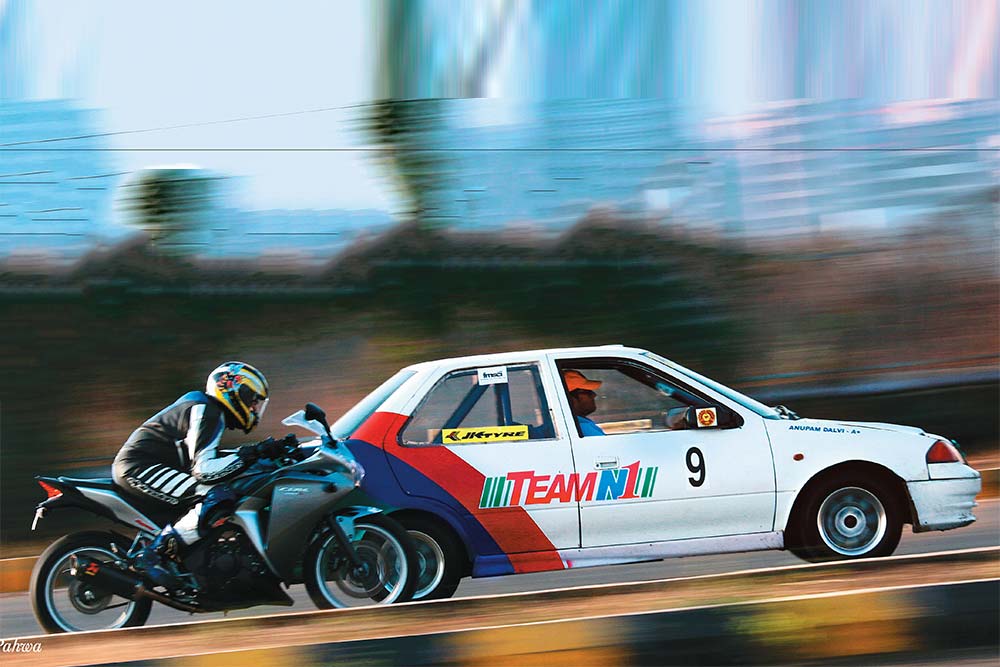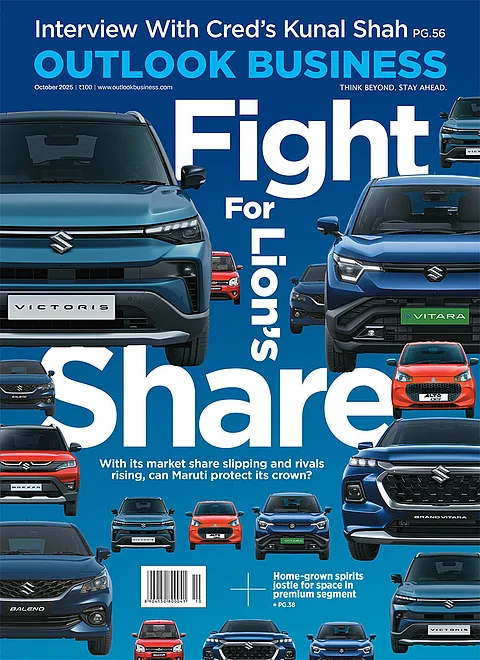Most weekend evenings at Carter Road, a few blocks away from the local police station, a few men huddle together and compare merchandise. Occasionally, they have an uninvited lecher, who stops to stare at the shiny parts on show. What’s on display here are mods. The merchandise would have drawn an even bigger crowd if the mods were indeed, curvy, long-legged models. In this case, although it attracts its share of gawkers, mods stand for modified — bikes and even superbikes tweaked to give a muscled and mean look. The owners of this merchandise are a mixed bag of rich and not-so-rich kids and self-employed motorcycle enthusiasts. This motley bunch yak about air filters, internal combustion engines and air-fuel mixtures. These conversations are not restricted to Mumbai; a similar group hangs around Airport Road in Bengaluru, or near the F1 circuit in Greater Noida and even at NH-17 just outside Kochi.
Keep the beefy connoisseurs out for a minute and ask what flies with the more modest Jagdish or Jyotis in the under-25 age group. “The hot favourites for guys in that age group are either a Maruti Swift or a Honda City,” says Srinivas Krishnan, editor, BS Motoring. While these cost anywhere between ₹4 lakh and ₹11 lakh, their pre-owned versions can be bought at around ₹3-5 lakh. As for the girls, they prefer the Hyundai i10, Chevrolet Spark or the Ford Fiesta. While there is such a big divide when it comes to the cars, young women have a clear favourite when it comes to two-wheelers — Honda Activa. It would not be wrong to say that Honda carried on from where Kinetic Honda left off. The gearless machine was a favourite among working women and collegians and that is the route Honda, too, has tread.
In cities other than metros, lack of reliable public transport has primarily driven the sales of four- as well as two-wheelers. When Hero Honda delivered mileage and became the market leader, Bajaj Auto had no option but to resort to styling and power to make a comeback. And its Pulsar thereafter has pretty much set the trend for the new generation of Indian power bikes that are now being launched. However, for young dudes preferring videshi, acquiring an imported 250cc growler priced between ₹1.5 lakh and ₹4 lakh is the first step to enter the power zone.
Big bang theory
Macho power bikes — the real thing — however, have always been the preserve of Japanese powerhouses like Honda, Yamaha, Kawasaki and Suzuki. Of course, there is Ducati and Harley, but the Indian youth having grown up on a staple of Bollywood moviesidentify more with Ninjas and Hayabusas. “Few lean toward the Yamaha R1 — its price puts it out of the range — but if anything was an aspiration, it would be that,” says Krishnan. The R1 costs upward of ₹12 lakh and boasts of a 1,000cc engine.
Japanese vroom vroom or the Dhoom effect is also responsible for the rise of Vicky Jaisingh. The Mumbai-based 38-year-old owns Performance Store, a popular bike-modification joint. Yes, that brings us back to mods. “Pipes save lives,” is Jaisingh’s favourite line. For Jaisingh, pipes mean loud exhausts that “change the way bikes sound”. It is the most common thing that his customers want installed. “When you are going at 100 kmph people can’t see you coming, but they can hear you and get out of the way,” he says nonchalantly. His store gets an average of 50-100 orders a month from various parts of the country with a ticket-size that ranges from ₹25,000 to ₹50,000. “A strong Facebook presence, motorsport forums and word-of-mouth brings callers from across the country,” explains Jaisingh. And with almost freaky coincidence, he fields a call from Gurgaon who wants air filters for his 2011 CBR250. The auto-mod market, industry players insist, has grown to ₹500 crore over the last seven years when it was almost non-existent. Performance Store, too, has shown a 15% revenue growth almost every year.
Hot wheels
With cars, it gets bigger. The mods on cars range from cosmetic upgrades to performance and detailing. Mineel Chitroda started Mkraft Design in 2004 and has seen interest grow every year. “When we started out, we got just one car a month, now it is closer to 40 at one time,” he says. While the most popular upgrade is body kits, which starts around ₹40,000, Chitroda insists the big money is now in performance enhancement and detailing. Peter Chacko of Pete’s, the biggest mod shop in the country with over 20 franchised stores, agrees.
Pete’s raked in ₹20 crore in FY12 with a bulk of the business coming from the metros. “Our Ahmedabad and Surat outlets don’t get as much business compared with Mumbai, Bengaluru and New Delhi,” he says. Most customers want to “upgrade diesel cars”, with the most common being Swifts and Fiestas. An upgrade means installation of a performance chip that erases the lag in a diesel car and offers better pick-up. By offering warranties and excellent services, customers stay loyal and come back for more. As long as the need for speed doesn’t abate, these mod-shops will hear the sweet sound of their cash counters ringing.












 Just one email a week
Just one email a week